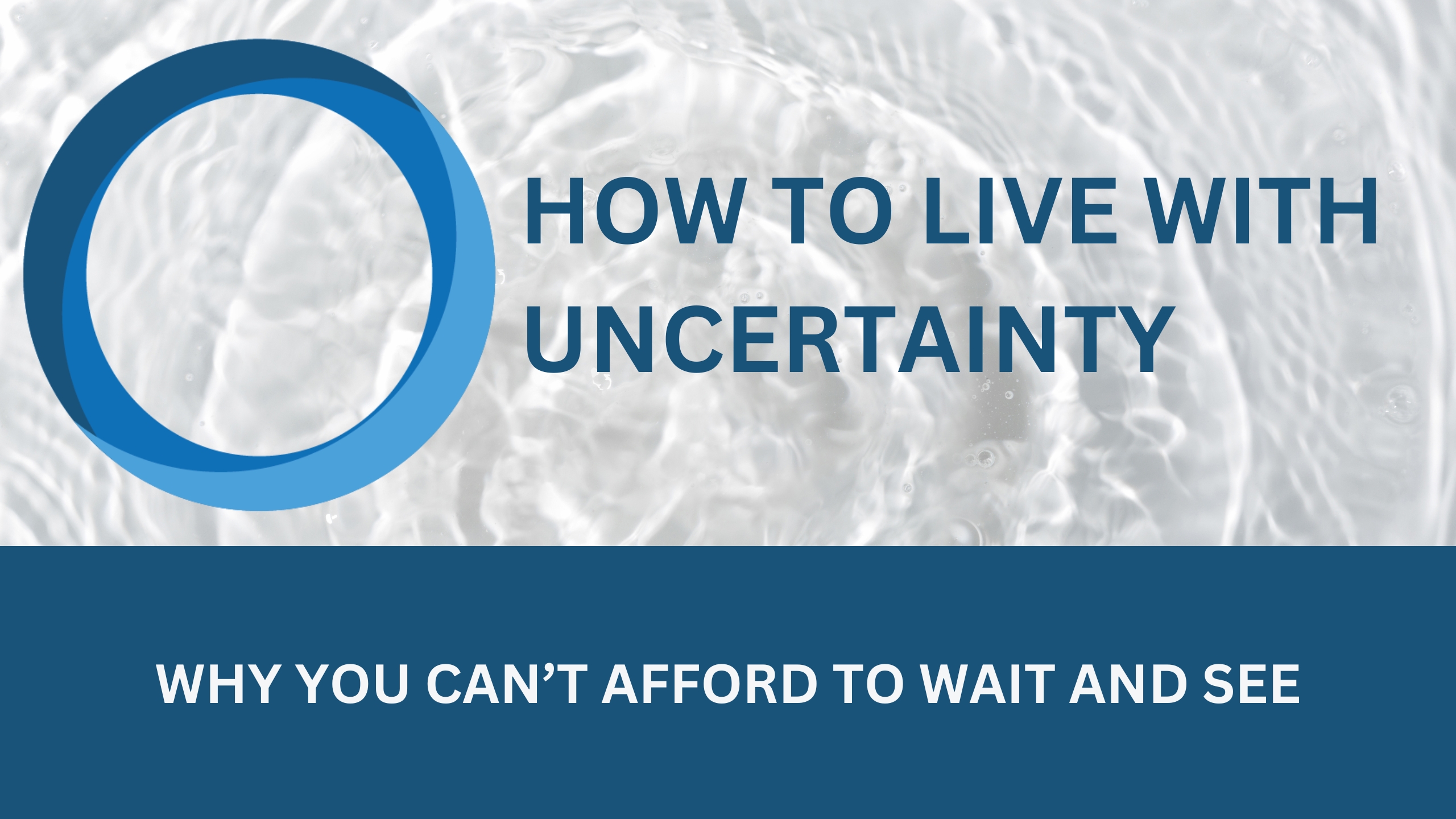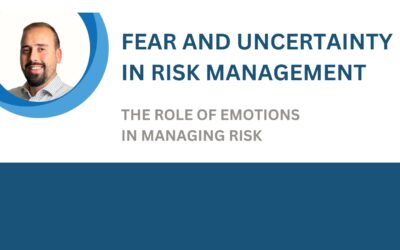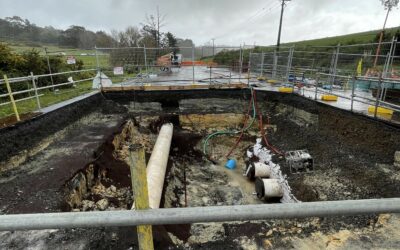Why you can’t afford to wait and see
With government cuts, the rising cost of living, rising interest rates and legislation changes we’re all feeling uncertain about the future. There is less money to go around, and we have to make hard decisions. The natural response of councils, businesses and individuals is to ‘wait and see’ which is making the situation worse.
Everyone is going into hibernation mode by cutting back on spending. Cost savings are being found by reducing headcount, cutting contractors/consultants, restructuring, deferring or cancelling projects/upgrades, and deferring maintenance.
A side effect of these disruptive changes is that they kill momentum across organisations and industries. A loss of momentum means less productivity, companies going out of business and an increase in system risk. When we aren’t fixing our assets or improving them, we’re increasing the chance of a major issue.
The people trying to work in these conditions are distracted by worrying about the future. Will I keep my job? Will my work life be negatively changed through a restructure? Do I need to find a new job? Managers, executives and CEOs are in the tricky position of trying to steady the ship without having certainty about the future either.
We’ve seen with the long overhang of Covid shutdowns that it takes time to get the wheels moving again after major disruption. This means that it will take time for the uncertainty we’re currently feeling to go back down to normal levels.
So, how can we live with uncertainty?
Uncertainty is a knowledge gap. It is not having enough knowledge to predict what will happen in the future. The bigger the gap, the more uncertain we are. Our knowledge of how the world works is known as our world model. Improving our world model improves our ability to predict outcomes and reduce uncertainty.
A world model, ironically, is not useful for modelling the entire world. However, it is incredibly useful on a small, local level. For example, if I’m holding a banana and let go, I am certain it will fall under the influence of gravity. If I throw a banana as far as I can, I can’t be sure how far it will go. These simple examples are incredibly useful for illustrating how we develop our world model and the factors that influence it:
Time
Before I start to throw the banana, I am less certain about the distance it will travel when compared to immediately after I’ve thrown it. Further, I’ll be very certain just before it hits the ground. This shows that we can gain more information as time goes on, but we don’t necessarily have to wait until we see the final result to start building a world model. This is particularly important when facing a long period of uncertainty or a long cause-effect cycle.
Frequency
If I throw a banana 100 times and measure the distance each time, I can be more certain about the distance it will go on the next throw. A good analogy for how a world model develops is trust.
Trust between people is built when we say we will do something, and we actually do it. If we do this over and over, we slowly build trust (thanks Kirsty Appleton for this great definition). When this concept is applied to our world model, we are building trust and certainty that our actions will generate a desired outcome in the future.
Recency
Suppose I throw the banana 100 times, wait 2 years then repeat the test. I will be less certain compared to doing the test immediately after throwing the banana 100 times. This shows how our world model is slowly eroded by time. Our world model is only as good as what we have seen lately. Similarly, there’s a natural instinct to view our current situation as unique. This is called the uniqueness bias.
A simple counter is to deliberately challenge your assumptions about the uniqueness of the situation and look to your previous experiences for proof to reinforce your world model.
Scope
Real life is large and far more complicated than throwing a banana. It is impossible to build a perfect world model, or even a good one. However, we can improve our ability to make predictions by narrowing our scope.
In the throwing example I sneakily added controls into the frame. By defining the object as a banana, me as the thrower, the action as throwing and the distance as the metric I was able to simplify the act of prediction by removing variables from the equation.
We can apply this to our lives by setting goals and creating an action plan for achieving them. This narrowing of scope creates a framework that allows us to make predictions about the future. We cannot predict what the economy will be doing one year from now, but we can reasonably predict that we will become healthier if we exercise regularly and cut calories.
Measurement
How we measure outcomes has a big influence on certainty. In the throwing example the distance thrown is easy to measure and simple to understand. However, in real life we don’t always get immediate feedback, and when we do, it isn’t always clear that it was the result of our actions.
If I apply for 5 jobs and get no interviews, I can’t say that applying for jobs doesn’t work. In this scenario we have 2 obvious metrics, number of applications and interviews. One we can directly control and one we believe we can indirectly control. For simplicity, I will leave out quality of the application and getting a job from this scenario.
We can build certainty in this causality by doing a large number of applications and finding the ratio of applications to interviews. By linking controllable actions to results at high frequencies we can overcome the measurement hurdle and be certain of the ratio.
How to Live with Uncertainty
When we decide to do something for the first time, or our environment has changed significantly we are faced with a lot of uncertainty. We have limited evidence that our actions will give us an expected outcome and it takes time to build evidence.
There’s the awkward first steps where you have to try over and over until you get meaningful feedback with no certainty that your actions are going to work. If there’s a significant delay between action and result, then that is a lot of time being uncertain. This sounds easy in practice, but in reality, is actually quite difficult.
Here are a few tips for getting through this stage:
- Set goals and create an action plan to narrow your scope. By narrowing our scope, we can simplify a problem and become more certain about the outcome.
- Talk to someone who has done it before. Given their success you can use that to build trust that actions based on their journey will generate results. The next level up is to look at scientific studies or textbooks if they are available and relevant.
- Look at your own experiences. Look for similar situations in the past where your actions generated a desired outcome. Analyse what worked and try to apply it to your current situation. Fight the urge to think that this time is different.
- Be patient. Accept that it will take time to learn. Focus on doing controllable actions in the short term rather than long term results and you will be surprised how quickly you achieve results.
- Rapidly iterate your actions making adjustments as you go. As described in the Time section above, you can look for indicators that your actions are having an effect without waiting for the final result.
- It is one thing to ‘know’ how your actions can influence the future, but we often have to experience something for ourselves to truly understand it. This means that feeling uncertain is normal and you can expect it to decrease with time and experience.
Hopefully this article has helped you think about uncertainty in a new way. I’m interested in hearing any tips you may have for handling uncertainty in the comments below.
Read More
Why Your Project Feels Gold-Plated and why it isn’t expensive consultants and overpriced contractors
Why operations are holding up your commissioning and why they aren’t just being difficult.
About the author: Benjamin Demmer-Knight is a Chemical Engineer with 10 years of experience in water treatment operations and engineering and is the managing director of Water Treatment Engineers NZ.





0 Comments